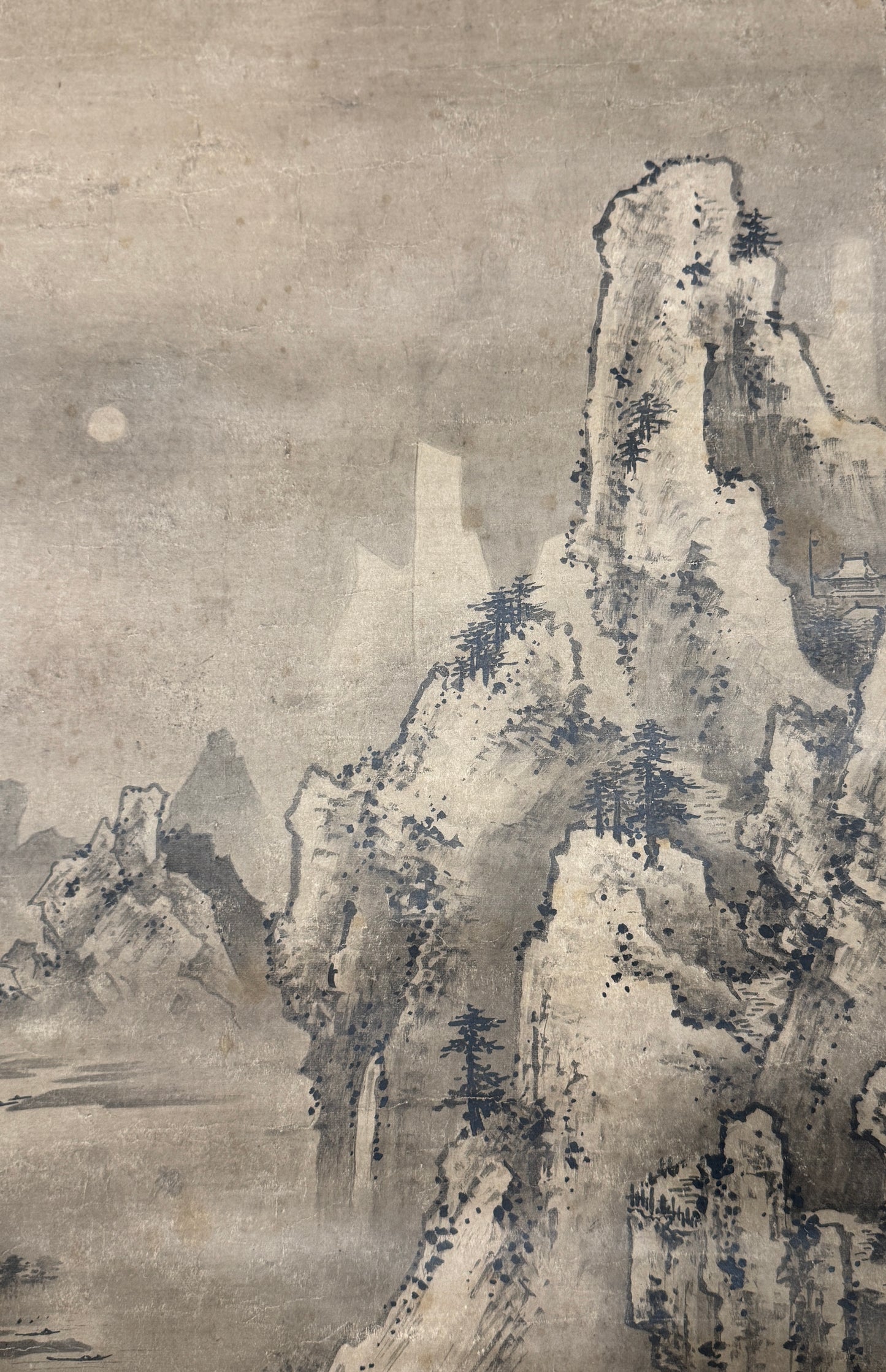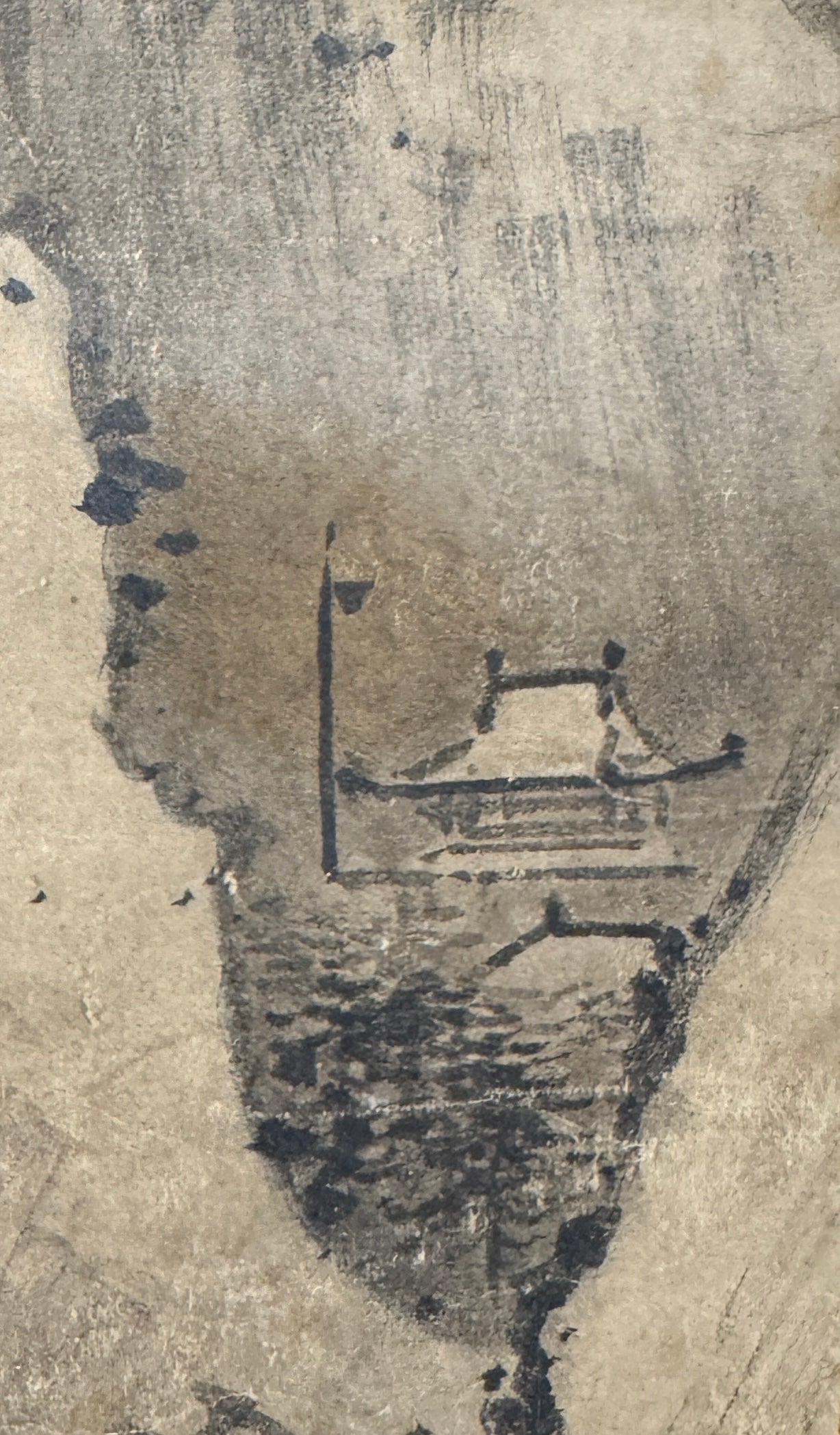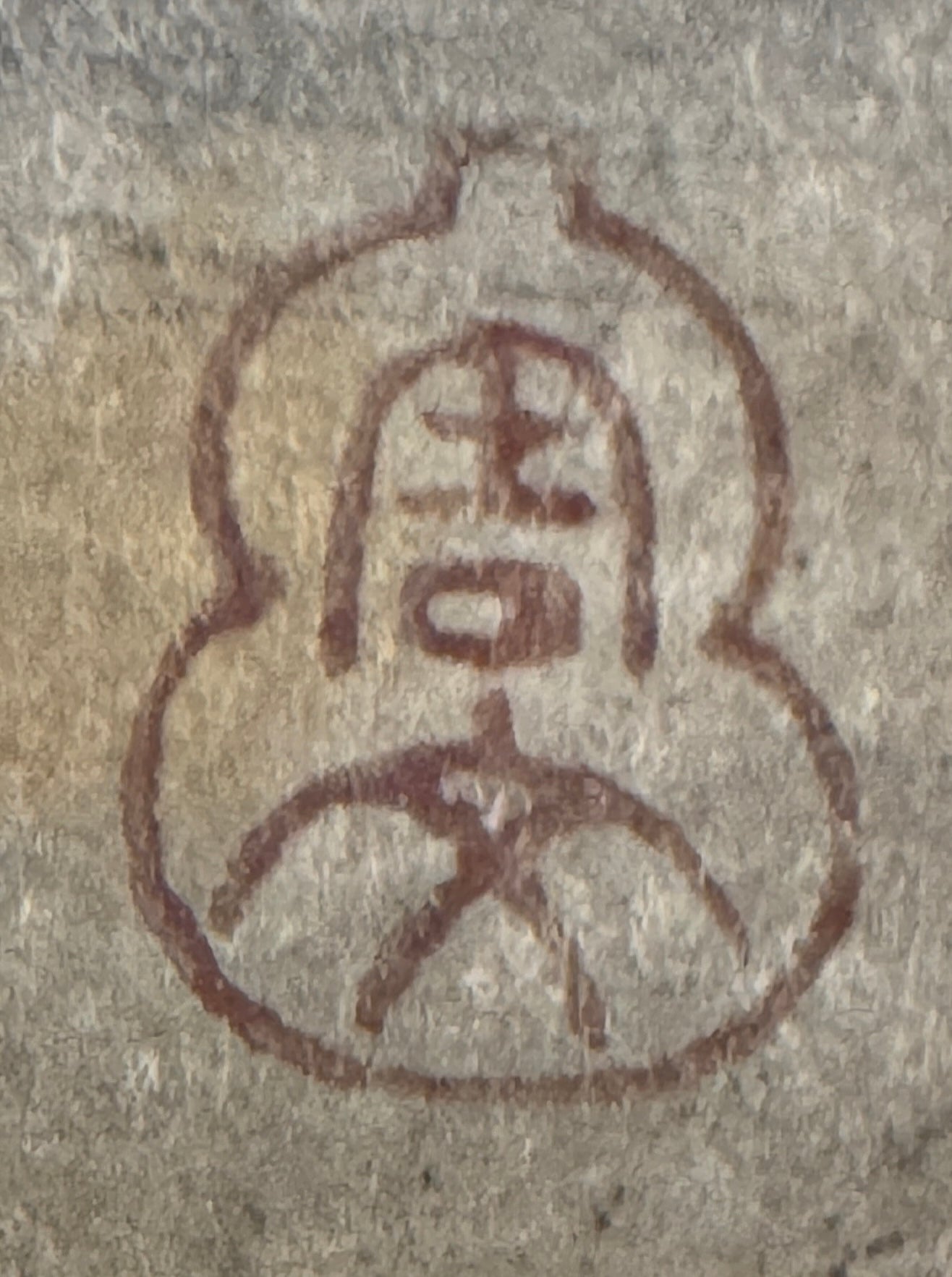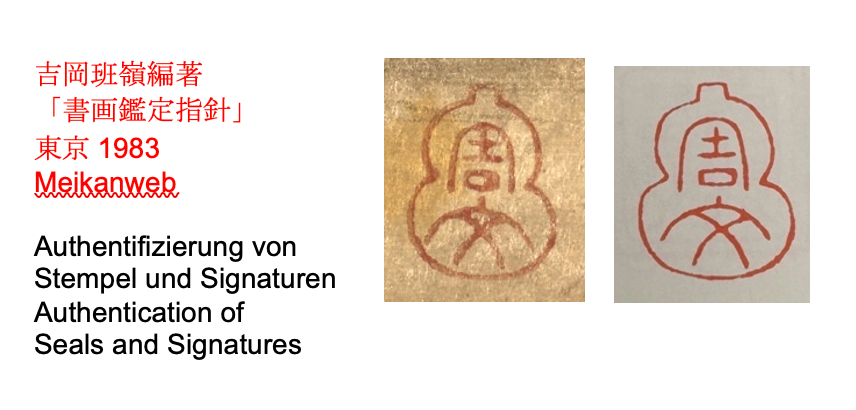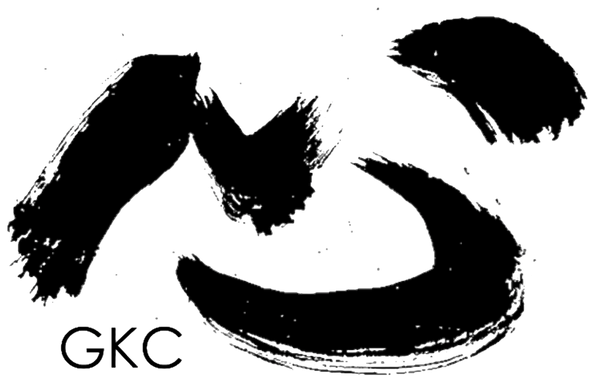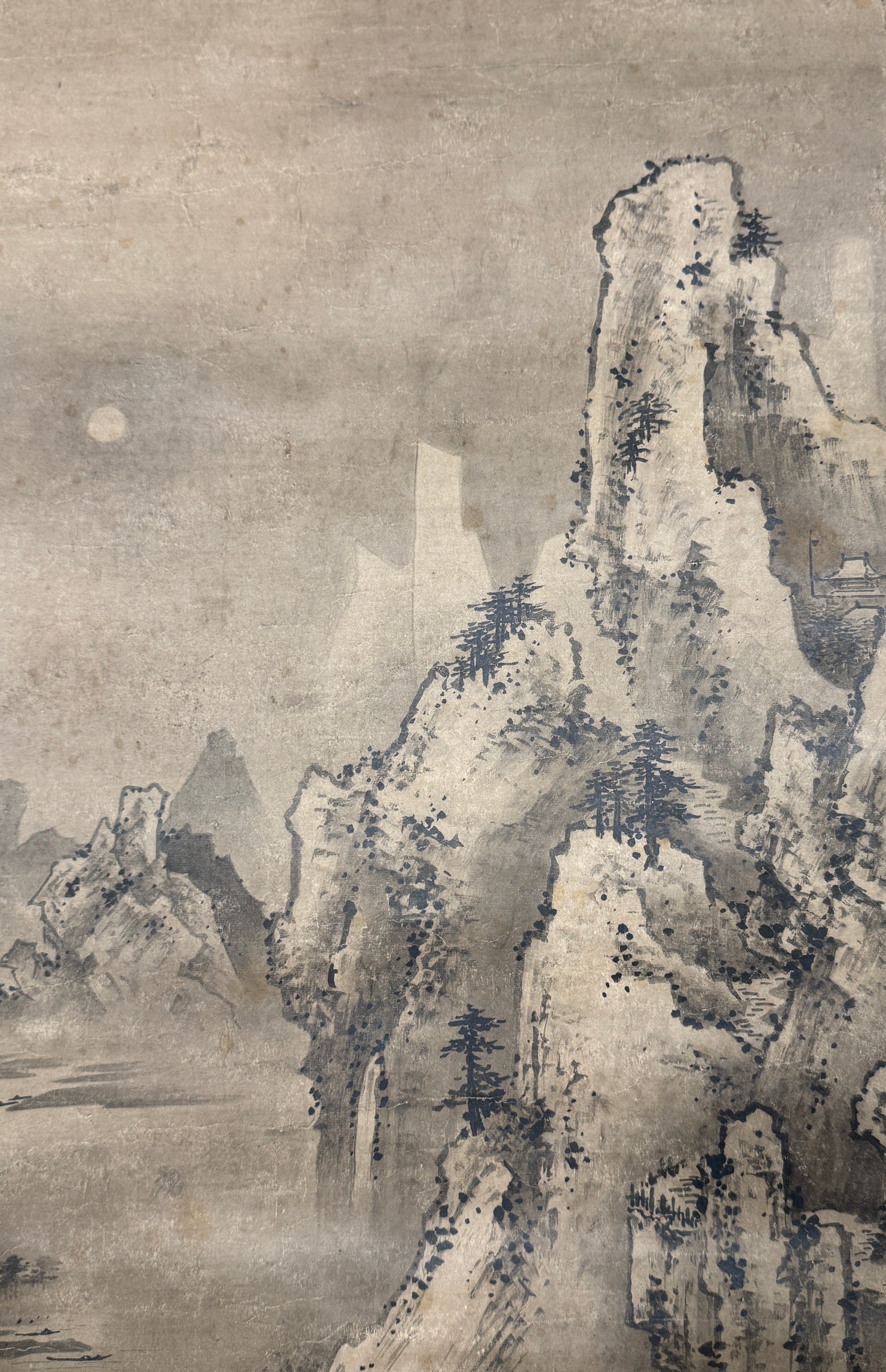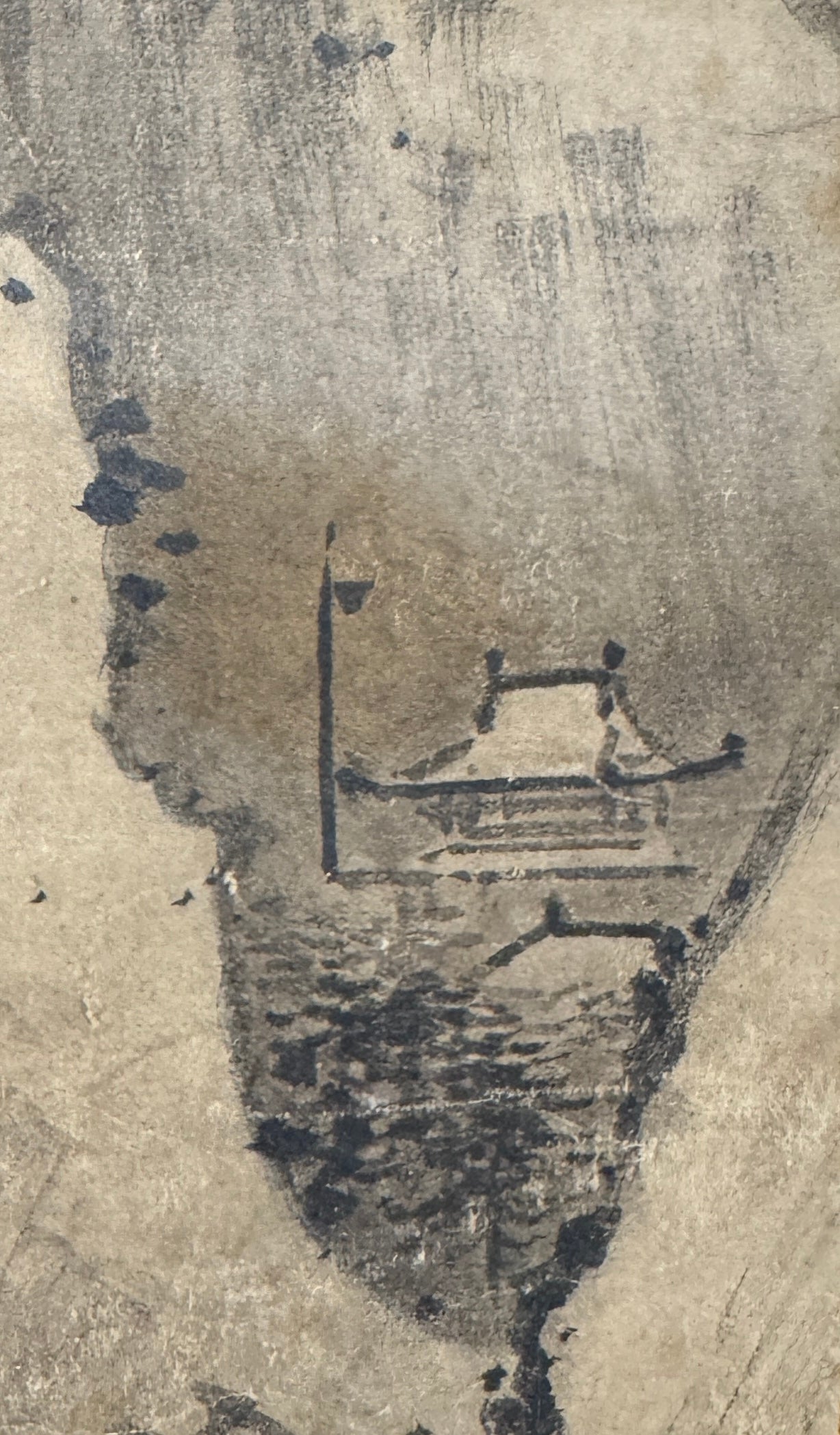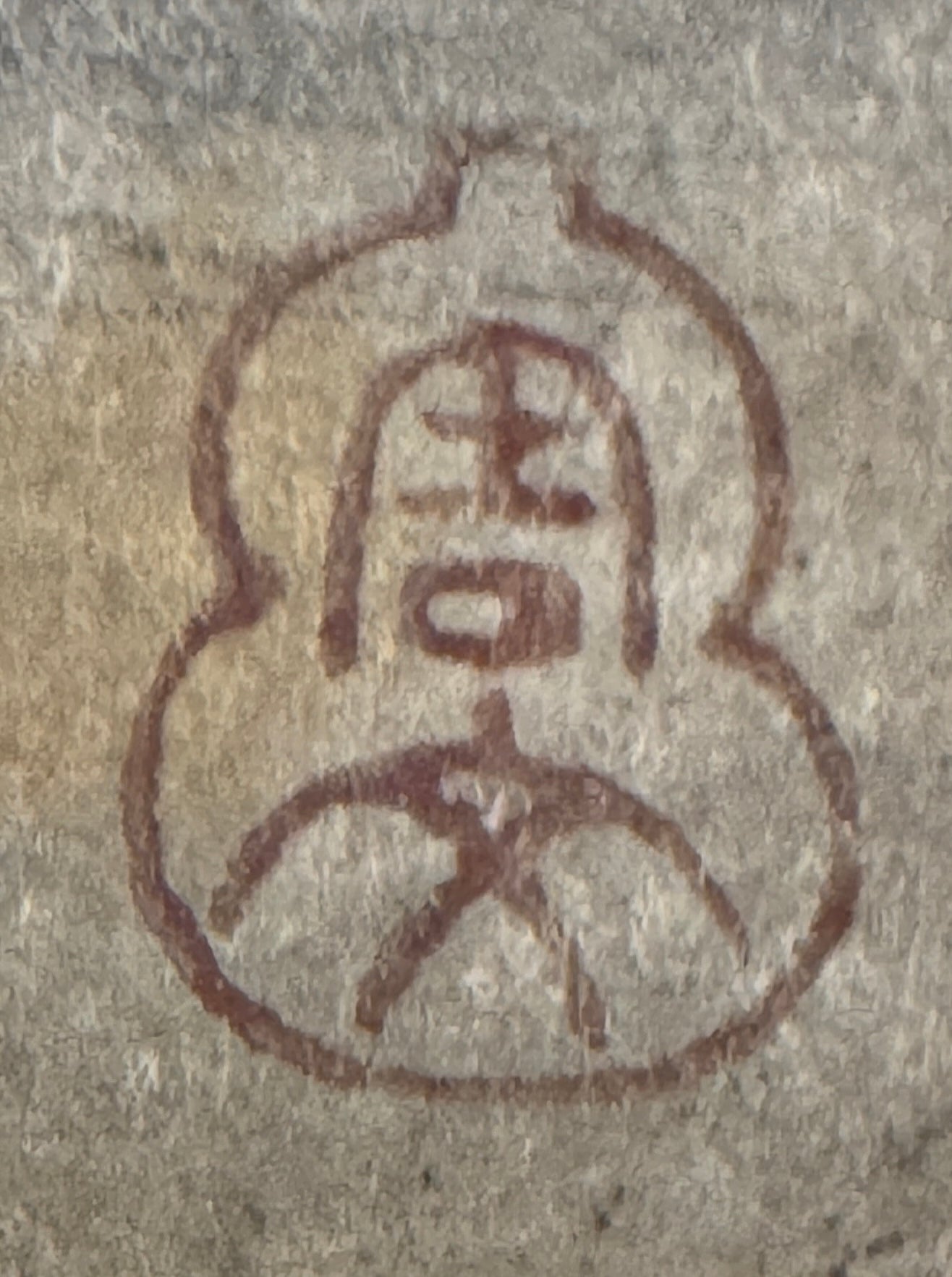Guignard Kyoto Collection
landscape | Shūbun (seal) 周文 (印) | before 1394 – after 1454
landscape | Shūbun (seal) 周文 (印) | before 1394 – after 1454
Couldn't load pickup availability
This painter is never actually referred to by his artist name, Tenshō Ekkei, but always by his priestly name, Shūbun. He worked at the Shōkokuji in Kyoto, where he also served as abbot for a time. He was considered the Shogun's designated painter and was part of an official mission that visited Korea in 1423/24.
He learned his art from Josetsu, who still had his ink painting completely aligned with China. Shūbun, too, was committed to the mainland tradition and imparted this spirit to his most famous student, Tōyō Sesshū (1420-1506). Shūbun himself never signed a single work; only two works are considered his creations with some certainty (although they differ stylistically to an astonishing degree), since these paintings feature other renowned artists with whom Shūbun had contact.
Nevertheless, a 1983 publication lists over 20 stamps by Shūbun (including the stamp in this image). All of these stamps were carved, some during the priest-painter's lifetime in the 15th century, and attached to Shūbun's works. These stamps therefore do not quite have the authenticity value of typical original Japanese artist stamps, and one must therefore rely primarily on stylistic criteria when it comes to questions of authenticity.
This landscape is entirely in keeping with Chinese-style landscape painting: In the foreground, a hiker crosses a small jetty, allowing the viewer to appreciate the monumentality of the entire scene. The jetty leads to a peninsula that juts out into a large lake in the background, on which a boat can be seen. The middle ground consists of a fantastically towering rocky mountain range, partially covered in pine trees. In the background, a distant (snow-covered?) mountain can be discerned, and a full moon shines in the somewhat cloudy sky. Thus, a landscape is painted in the Chinese style of the Sung period (960-1279)—a style that was considered the most perfect in Japanese art at that time.






